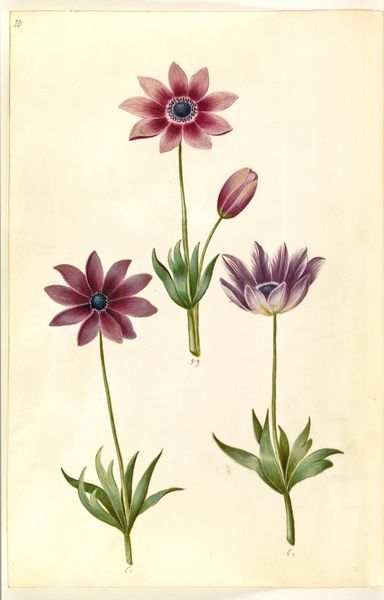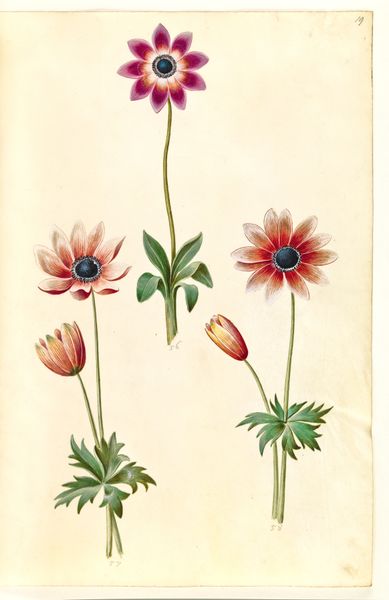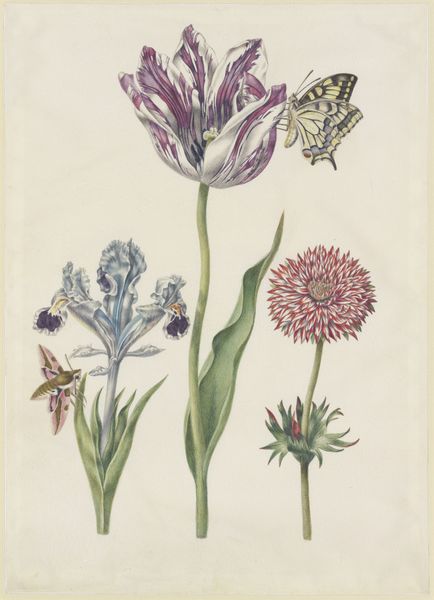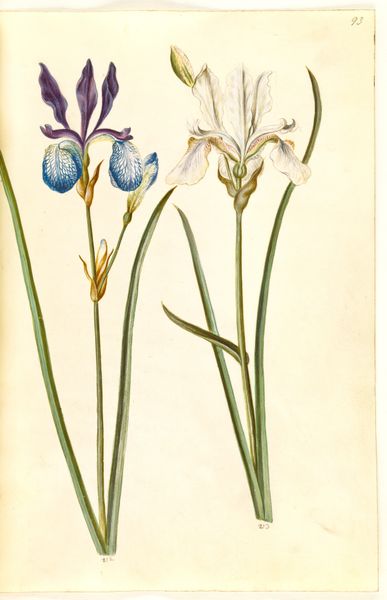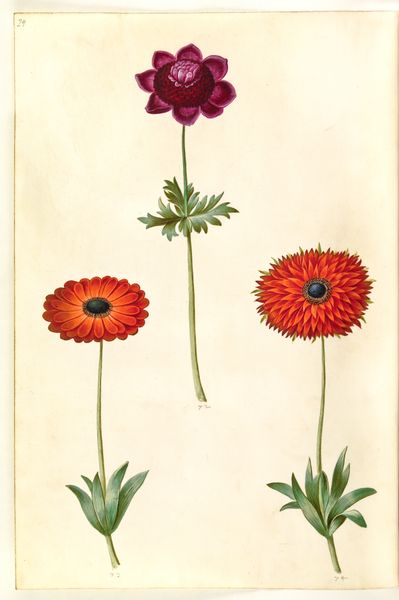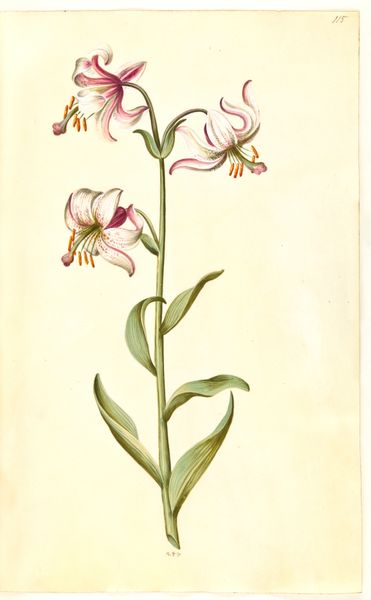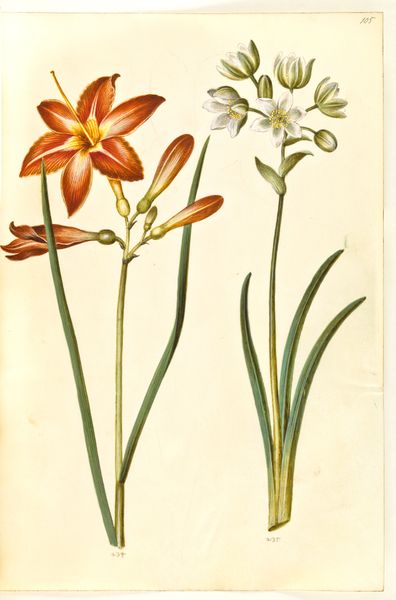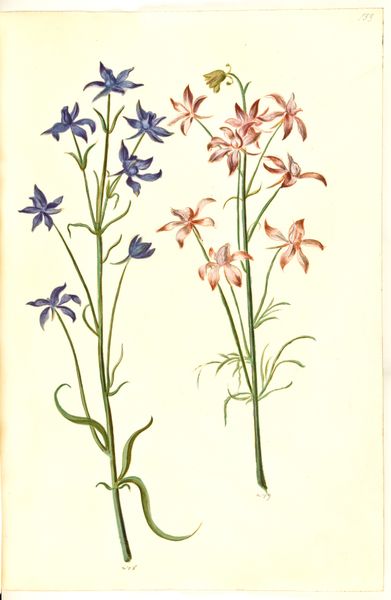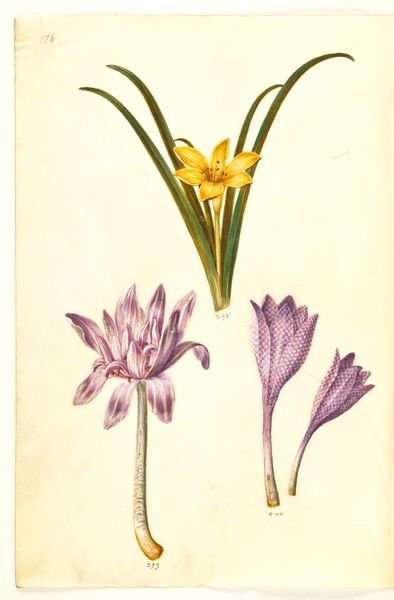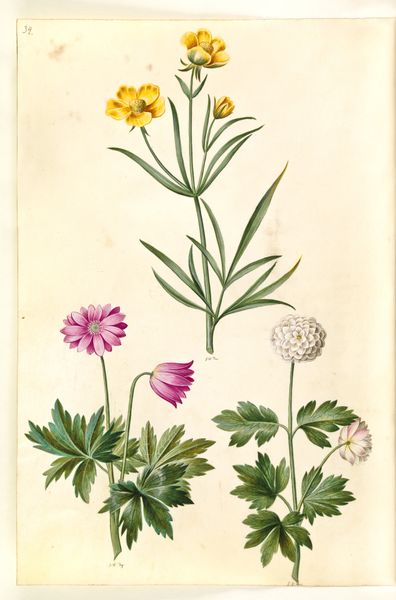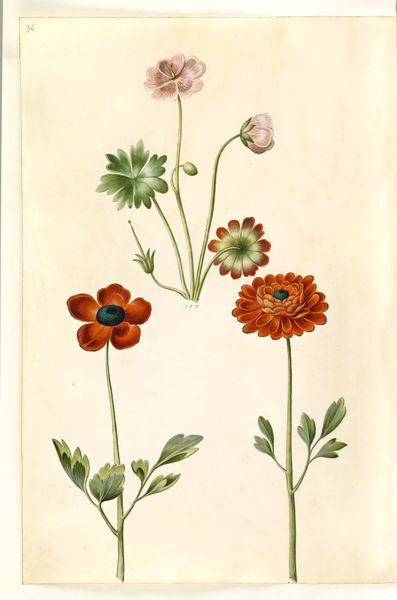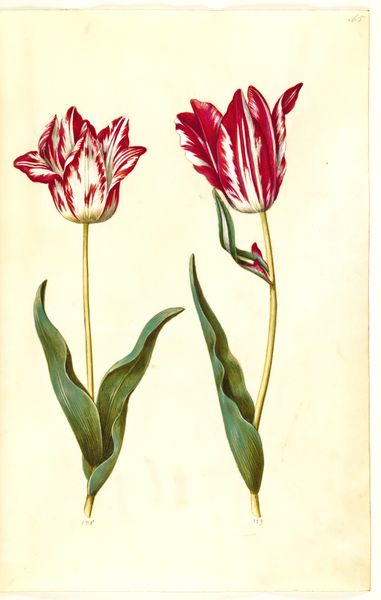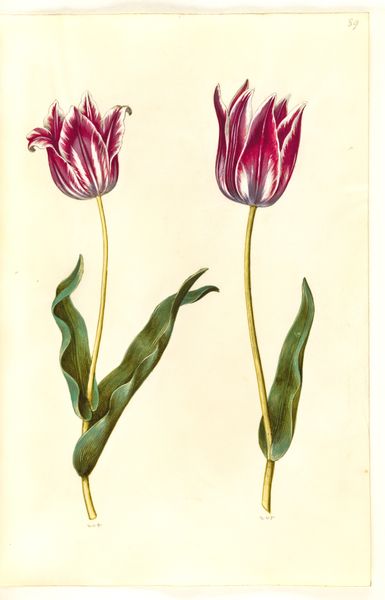
Crocus vernus (vår-krokus); Crocus angustifolius (balkan-krokus); Bulbocodium vernum (?) (vår-lysblomst) 1635 - 1664
0:00
0:00
drawing, painting, gouache
#
drawing
#
painting
#
gouache
#
landscape
#
food illustration
#
early-renaissance
Dimensions: 375 mm (height) x 265 mm (width) x 85 mm (depth) (monteringsmaal), 356 mm (height) x 249 mm (width) (bladmaal)
Curator: What a delicately rendered piece! We’re looking at "Crocus vernus (vår-krokus); Crocus angustifolius (balkan-krokus); Bulbocodium vernum (?) (vår-lysblomst)" a gouache painting on paper attributed to Hans Simon Holtzbecker, dating from between 1635 and 1664. It’s part of the collection at the SMK, the Statens Museum for Kunst. Editor: It strikes me as charmingly precise. Each flower almost leaps off the page with its meticulous detail and vibrant yet restrained color palette. Curator: Absolutely. Holtzbecker was deeply embedded in the scientific and artistic circles of his time. Flower illustrations such as this one were important contributions to botanical knowledge, acting as visual records for scientific study during an era of growing exploration and trade. Editor: You can certainly feel the scientific gaze. But consider how the composition enhances its inherent beauty! Holtzbecker contrasts warmer hues like the saffron yellows with the cooler blues and purples, creating a pleasing harmony across the image. It feels more than a clinical record; it's a composed piece of visual delight. Curator: Indeed, the act of documentation intertwined with patronage and artistic license. Works such as this one were commonly found in aristocratic collections, symbols of wealth and refined taste reflecting a mastery over the natural world that spoke to prevailing societal hierarchies. Editor: Right, it's that interplay I find compelling. Even something as simple as the light washes contributes significantly, enhancing the forms without losing their individual clarity. Look at how subtly Holtzbecker builds form with simple shading – a masterclass in observation. Curator: We mustn't forget the important symbolic dimension, either. In a period shaped by strict social norms and deeply embedded religious beliefs, flower painting took on meaning well beyond scientific intent, offering artists avenues to explore, critique, and reinforce wider world views and prevailing social ideologies. Editor: It speaks of a keen artistic skill married to a deep sense of observation. Overall, Holtzbecker’s attention to botanical detail, infused with a visual style that lends dignity and elegance, provides an art that feels as scientifically relevant as it is emotionally engaging. Curator: It prompts you to appreciate how cultural norms and aesthetic sensibilities inevitably become linked, producing creative artworks that tell multiple intertwined stories. Editor: I completely agree; these flowers serve as a portal through which you appreciate the scientific accuracy while never forgetting its profound artistic nature.
Comments
No comments
Be the first to comment and join the conversation on the ultimate creative platform.
